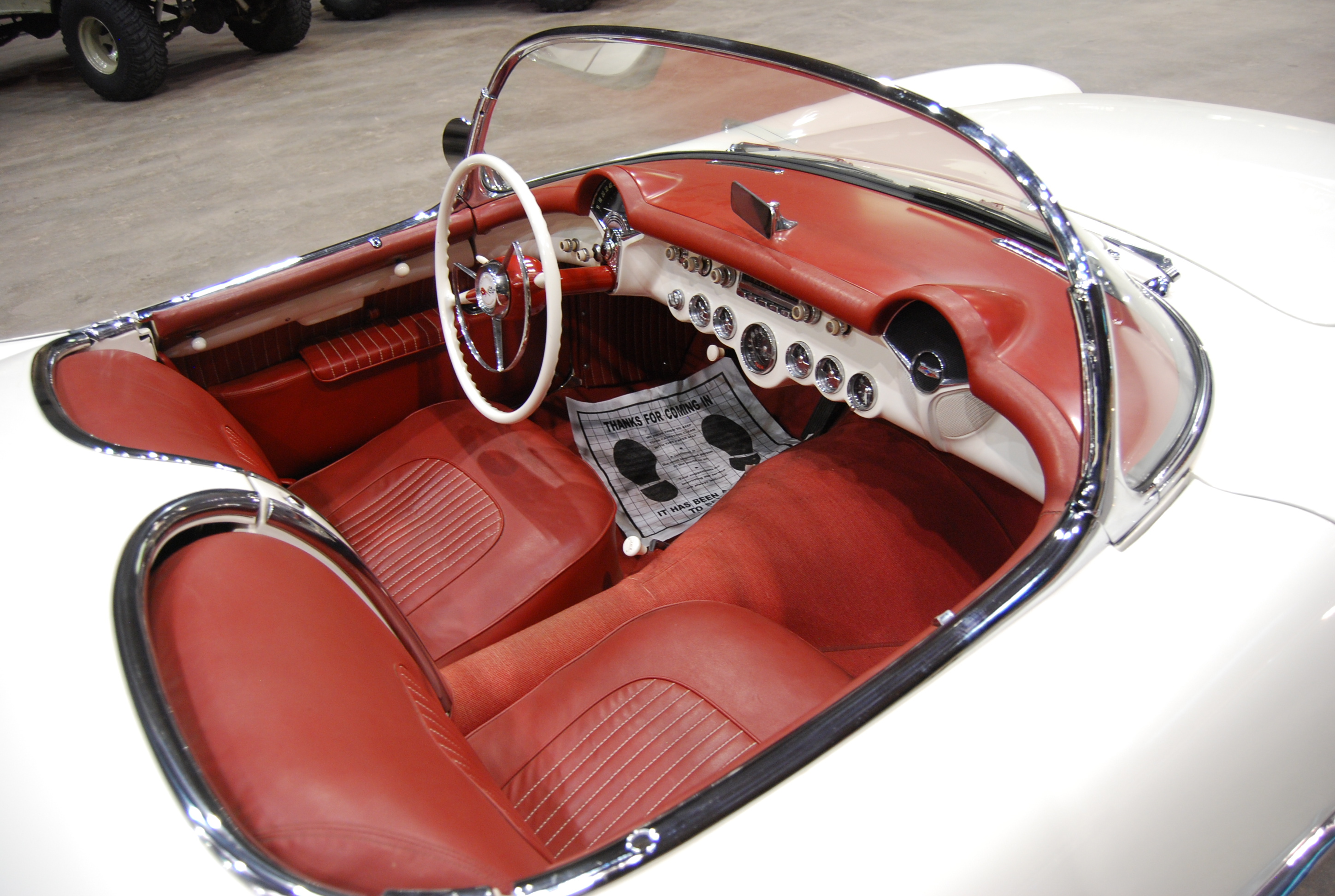Corvette History 
Select a year and a model to view the vast history of Corvettes.
Profile

The first-generation Corvette was sold from 1953 thru 1955 with the 1953 and 1954 editions being six-cylinder-only models. The Corvette had an innovative fiberglass body, a chrome-framed grille with 13 heavy vertical chrome bars, rounded front fenders with recessed headlights and wire screen covers, no side windows or outside door handles, a wraparound windshield and protruding, fender-integrated taillights.
The 1954 Corvette’s interior featured a floor-mounted shifter for the Powerglide two-speed automatic transmission and oil pressure, battery, water temperature and fuel gauges, plus a tachometer and clock.
The early Corvettes were virtually hand-built cars and a lot of minor changes were made during the production run. The Polo White exterior with Sportsman Red interior was the early Corvette’s signature color scheme.
Short exhaust extensions were used on early 1954 Corvettes since they were prone to drawing exhaust fumes into the car through the vent windows. A black oilcloth window storage bag was provided to protect the 1953 Corvette’s removable plastic side windows when stowed in the trunk.
For all practical purposes the 1953 and 1954 Corvettes were the same, but in 1954 minor changes were made to the window storage bag, air cleaners, starter and locations of the fuel and brake lines. Unlike the previous year’s model, 1954s were available in Pennant Blue, Sportsman Red and Black, in addition to Polo White. The soft top was now offered in beige.
A new style of valve cover was used. Four bolts through the outside lip instead of two center studs held it on. The valve cover decals were different with larger lettering. The optional radio had Conelrad National Defense System icons on its face. In early 1954, the original two-handled hood latch was changed to a single-handle design.
Production of 1954 Corvettes began Dec. 23, 1953. Approximately 80 percent

of 1954 Corvettes were painted white. The 1954 Corvette did not achieve its sales target of 10,000 cars. In fact, over 1,100 were unsold when the year ended. A 1954 Corvette could go from 0 to 60 mph in 11 seconds and from 0 to 100 mph in 41 seconds.
VIN: The Corvette used the standard Chevrolet Vehicle Identification Number (VIN) coding system. A tag located on the left-hand front door hinge pillar consisted of 10 symbols. The first symbol was an E for Corvette. The second and third symbols indicated the model year, for example 54=1954. The fourth symbol identified the assembly plant as follows: S=St. Louis, Mo. The last six symbols were digits representing the sequential production number. Corvettes for 1954 were numbered E54S001001 to E54S004640. Engine numbers were found on the right-hand side of the crankcase behind the distributor. The engine numbers for 1954 models used the suffix YG. Since the Corvette bodies were virtually handmade, they did not carry standard Fisher Body Style Numbers as did other GM cars. The Corvette model number consisted of the four digits 2934, which also served as the body style number for the early production years.
ENGINE: In-Line. Six-cylinder. Overhead valve. Cast iron block. Displacement: 235.5 cid. Bore and stroke: 3.56 x 3.96 in. Compression ratio: 8.0:1. Brake hp: 150 @ 4200 rpm. Single breaker-point ignition system. Four main bearings. Carburetor: Three Carter Type YH one-barrel Model 2066S.
CHASSIS: Wheelbase: 102 inches. Overall length: 167 inches. Front tread: 57 inches. Rear tread: 58.8 inches. Tires: 6.70 x 15. Front suspension: Coil springs, tube shocks and stabilizer bar. Rear suspension: Leaf springs, tube shocks and solid rear axle. Drum brakes. Steel disk wheels. Axle ratio: 3.55:1.